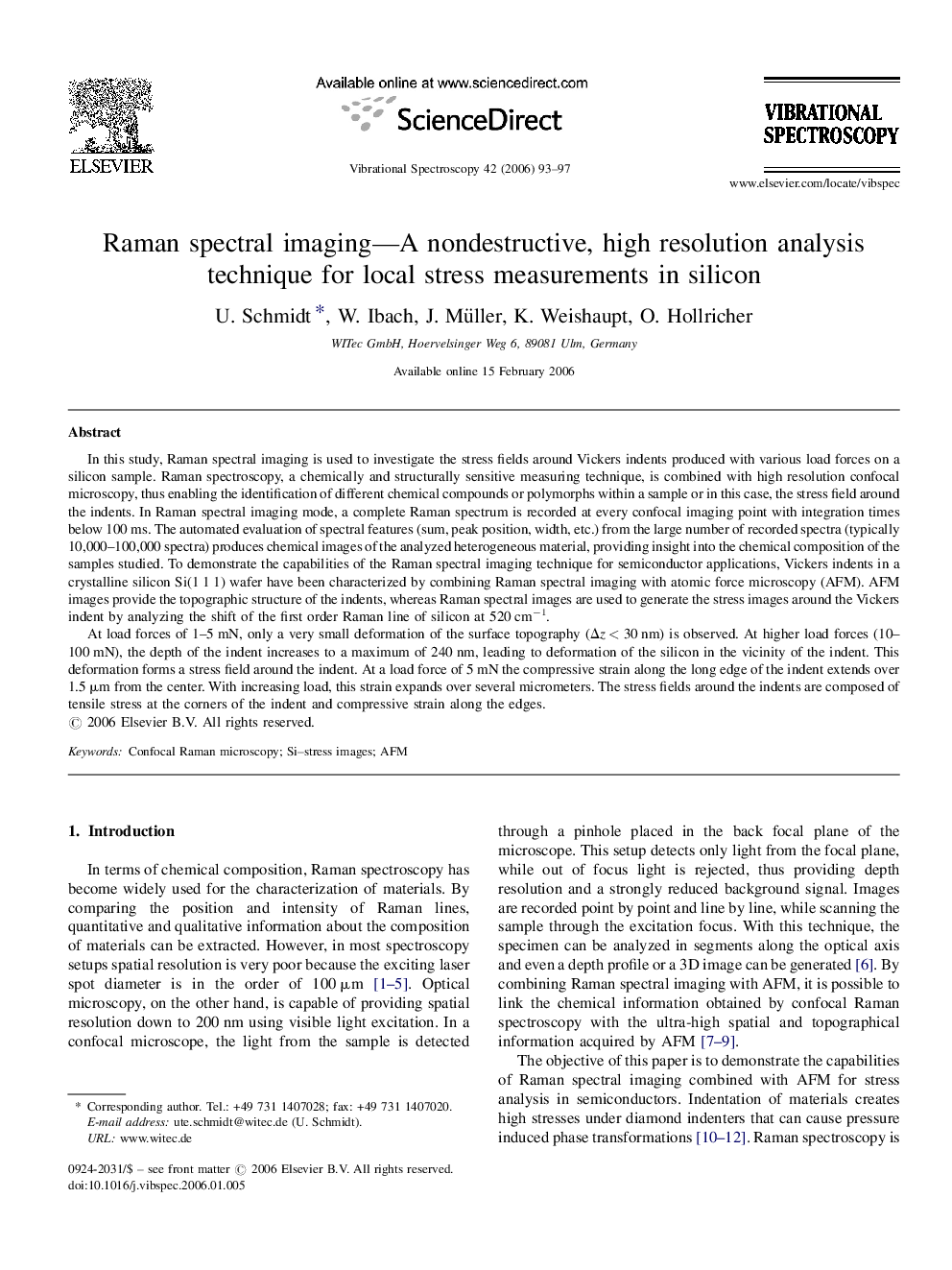| Article ID | Journal | Published Year | Pages | File Type |
|---|---|---|---|---|
| 1249852 | Vibrational Spectroscopy | 2006 | 5 Pages |
In this study, Raman spectral imaging is used to investigate the stress fields around Vickers indents produced with various load forces on a silicon sample. Raman spectroscopy, a chemically and structurally sensitive measuring technique, is combined with high resolution confocal microscopy, thus enabling the identification of different chemical compounds or polymorphs within a sample or in this case, the stress field around the indents. In Raman spectral imaging mode, a complete Raman spectrum is recorded at every confocal imaging point with integration times below 100 ms. The automated evaluation of spectral features (sum, peak position, width, etc.) from the large number of recorded spectra (typically 10,000–100,000 spectra) produces chemical images of the analyzed heterogeneous material, providing insight into the chemical composition of the samples studied. To demonstrate the capabilities of the Raman spectral imaging technique for semiconductor applications, Vickers indents in a crystalline silicon Si(1 1 1) wafer have been characterized by combining Raman spectral imaging with atomic force microscopy (AFM). AFM images provide the topographic structure of the indents, whereas Raman spectral images are used to generate the stress images around the Vickers indent by analyzing the shift of the first order Raman line of silicon at 520 cm−1.At load forces of 1–5 mN, only a very small deformation of the surface topography (Δz < 30 nm) is observed. At higher load forces (10–100 mN), the depth of the indent increases to a maximum of 240 nm, leading to deformation of the silicon in the vicinity of the indent. This deformation forms a stress field around the indent. At a load force of 5 mN the compressive strain along the long edge of the indent extends over 1.5 μm from the center. With increasing load, this strain expands over several micrometers. The stress fields around the indents are composed of tensile stress at the corners of the indent and compressive strain along the edges.
